
A lot has changed post the pandemic. The entire world has adjusted its way into the new normal bit by bit. The work culture has taken a drastic turn and the ways of working have changed. From the traditional ways of working to remote working solutions, professionals across the globe have been a part of this paradigm shift in prioritizing the need of the hour.
This change calls for not only a few momentary shifts in the work culture but rather some permanent adjustments at the workspace level too. Soon after the pandemic hit, the importance of a physical presence for organizations grabbed the limelight as a debatable topic. While everyone enjoyed working from the comfort of their homes, most opined that remote working may not be a sustainable work model and the presence of a physical workspace is important for employee welfare.
As per a survey conducted by Harvard Business Review, about 40% of people from the managerial level expressed low confidence in managing a team remotely, with 38% of them believing that team members working remotely perform worse than those working from the office. As per the Collaboration Survey conducted by WeWork, a Coworking Space spread across the globe, the impact of Working from Home is more towards the negative side when it comes to collaboration. The ability to meet and collaborate productively has reduced by 11%, the ability to maintain a social relationship has dropped by 17%, and the ability to have an unplanned interaction reduced by 25%.
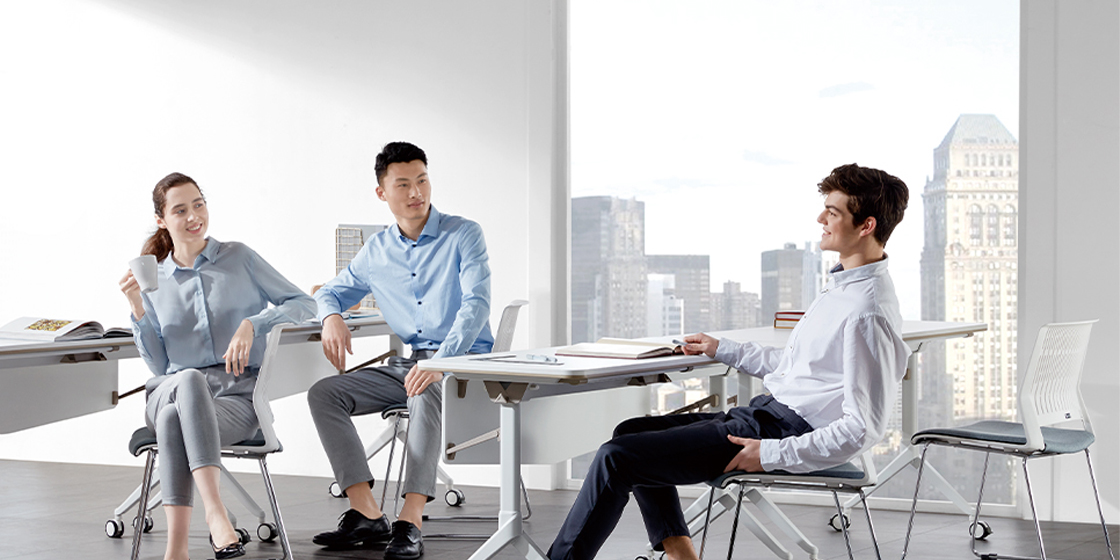
Since the cons of WFH have led us to believe in the importance of office space, we tried digging deeper into the challenges being faced currently by experts in the design industry in terms of accommodating the changing requirements into an office space design. The team at Zyeta, an integrated workspace design and build services firm, was more than willing to collaborate to help us understand the changing office design trends better. Shilpa Revankar, Director and Co-founder (further ref. as SR), and Kishore Manoharan, Principal Architect (further ref. as KM) were onboarded soon followed by a detailed interview leading to some extremely insightful views shared by them.
The Interview
Q. What are your views on the Work-From-Home culture? How important is the presence of a physical office space?
KM: I personally see 'Work-From-Home' as an option – not a culture. It is not something I believe, is perfectly feasible for the long term. Workplaces have always thrived, and always will. The best work does happen in workplaces. Employees, especially the best ones are pretty conscious about productivity—not to mention the quality of their work. They need not just to complete the work in time, but to do it exceptionally well, to achieve their targets, to be creative, to collaborate, and to learn new things.
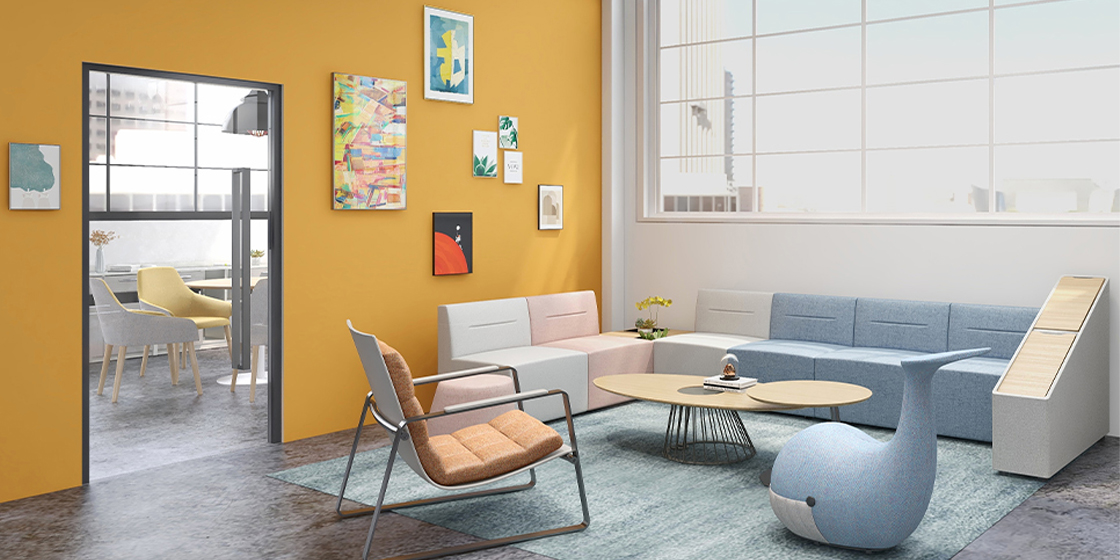
Obviously, accommodating all of those is next-to-impossible in a WFH setup. Sure, it can be occasionally fun to lounge around with mom and dad, kick back a bit, and kill some tasks—but your true friends are your colleagues, and they belong with you in the workplace.
Shafeeq Mohammad, one of our bright young minds, calls it "Building morals through community spirit", and that can only happen in the workplace.
Q. Can you share some design requirements that you've received to facilitate WFH?
SR: As a designer, speaking for myself and my team—the thing we're most worried about is—safety. Not to mention, the overall wellness of the people. We've observed an increasing lack of interest in work due to WFH. Hence, keeping up an atmosphere of positive mental health and high morale is the biggest challenge we face.
In terms of design elements though, we have had discussions regarding various elements, like comfortable furniture, Activity-based Workshops, Anti-bacterial and Anti-viral Fabrics, Virtual/Immersive spaces to connect different people. Not to mention, facilities that support high-speed networks.
Q. Companies are now looking at a combination of Work-From-Home & Work-From-Office arrangement to facilitate the distributed workforce option, have you received any such requirements yet? If so, what are the design challenges you've faced? Also, we would love to hear about some innovative solutions your team developed to overcome those challenges.
KM: Indeed. My teammate Janani Chitra Kulothangan always refers to us as "solutions-providers", and not just architects. Delivering the design is great, yes, but it is important to go beyond that and do more. We have our research think-tank in place, and always remain on top of the latest trends in design – hence, the solutions on the solutions provider's part.
I and my team both agree that the pandemic needs both a 'macro' and 'micro' level approach in thinking. To solve the problem through design, you have to identify the problem first. Some of the challenges we've identified as being there are connectivity issues between locations, coordination issues, lack of facilities, delay in work progress, and lastly, shutting down the entire workplace and asking everyone to be WFH (something we think is a bit preposterous).
The solutions we have identified so far, include: Building immersive spaces in offices—that combine both VR and AR technologies. Alongside that, we believe that segregation of workspaces is important – so that there is always only a partial shutdown, not a complete one.
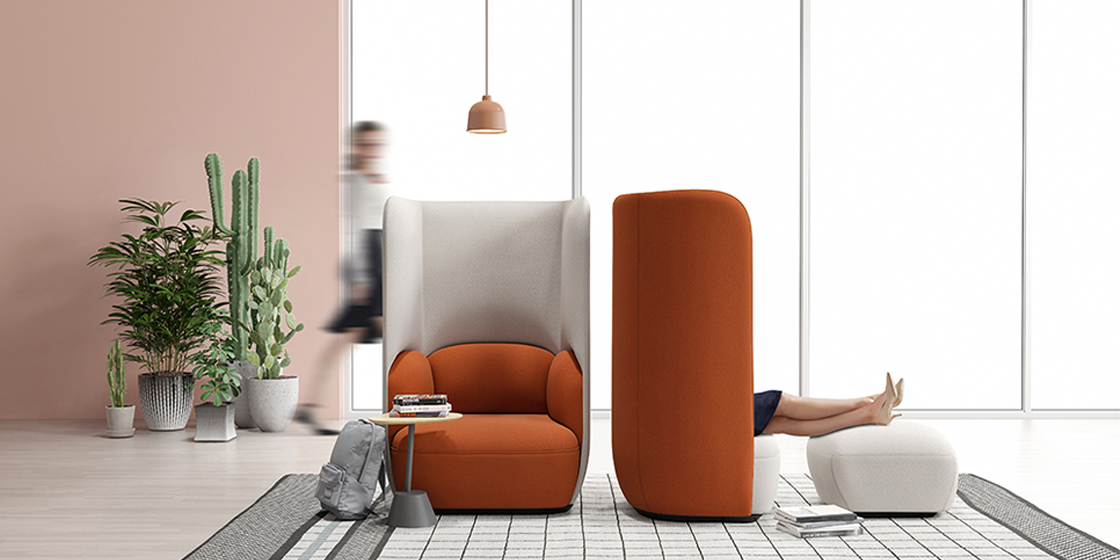
There is of course a lot more to it than just this, so we keep on exploring.
Q. What are the most common design changes in demand post the pandemic? As per your opinion, are these changes temporary or shall we expect these changes to linger around for long?
SR: To sum it up in a concise way, the problem at the moment, needs both temporary and permanent solutions. We have identified some temporary solutions, which will change as things get back to normal. For the long run however, we have introduced some permanent changes that are focused on well-being.
We have cataloged them in our research paper "PARADIGM SHIFT IN WORKPLACE DESIGN POST COVID-19 | A Comeback Plan for Offices" – which we hope makes a worthwhile read for any design-minded individual. Our Head-of-Research Aparna Anirudhan, meanwhile, continues to be on top of all this, as she explores the design in intricate detail every day. To quote her: "There is still a long way to go."
Q. What and how are the various social distancing norms being imbibed in the current office space designs?
KM: Integrating healthy social distancing within the design has been a big part of our work process. Wherever possible, we have proposed strict 6ft social distancing. Some of the measures we have undertaken include visible signs, temporary partitions, screens, keeping alternate seating unoccupied, employee awareness, and familiarizing them with hygiene. We even have proposed making corridors wide and introducing physical barriers wherever social distancing is not possible.
Q. Given the situation, do you think the factors in selecting an office space will change in the coming future?
SR: But of course! Health and safety will become the major criteria in selecting office spaces from now on. Since occupancy has come down majorly, even the overall efficiency of the space will be considered, more so than ever.
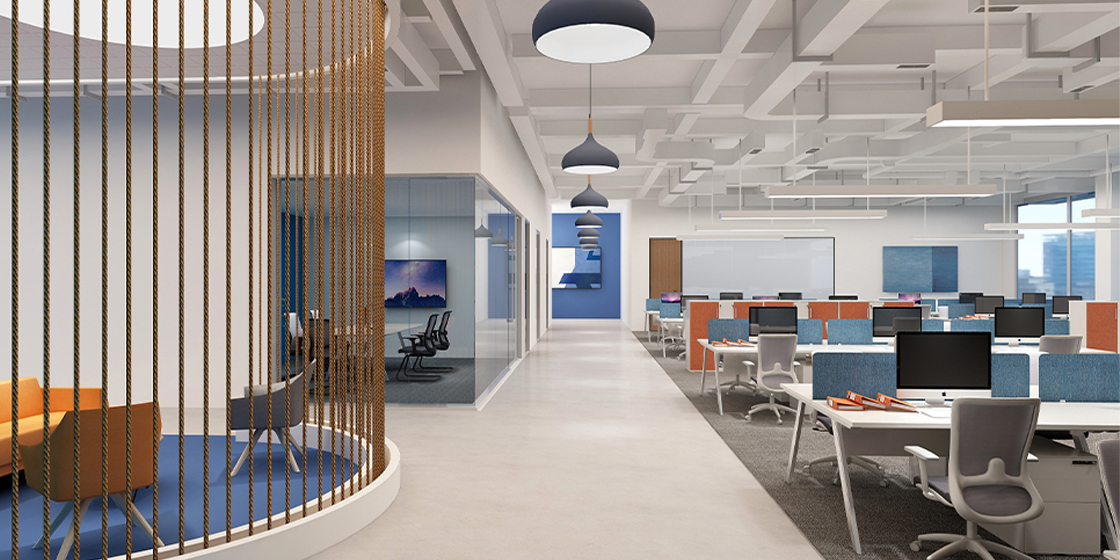
Other important considerations will be based on location, size of office space, hygiene consideration, well-being standards, and connection with nature. While health and safety have always been a great part, now it will be emphasized more so than ever – and that's great.
Q. From an architectural point of view, do you see any changes in the structural design of office spaces?
KM: In terms of structural design, not so much – according to us, at least. We do feel that service planning will have an impact – at least from an architectural point of view. Movement between the floors, use of common services like washrooms, etc. will be affected.
We do feel that more flexibility will equal more safety. The more a workplace is connected to nature, the more ways we can avoid any issues. Construction changes based on flexibility and connection with nature will also be encouraged.
Speaking further, we are also expanding further on modular flexibility in terms of the overall spatial dynamic of the office. It needs to move out from rigidity and conformity, and as much into flexible and adaptable space as possible. Elements like mobile meeting rooms have a large impact on transforming the space and keeping it flexible for the near future.
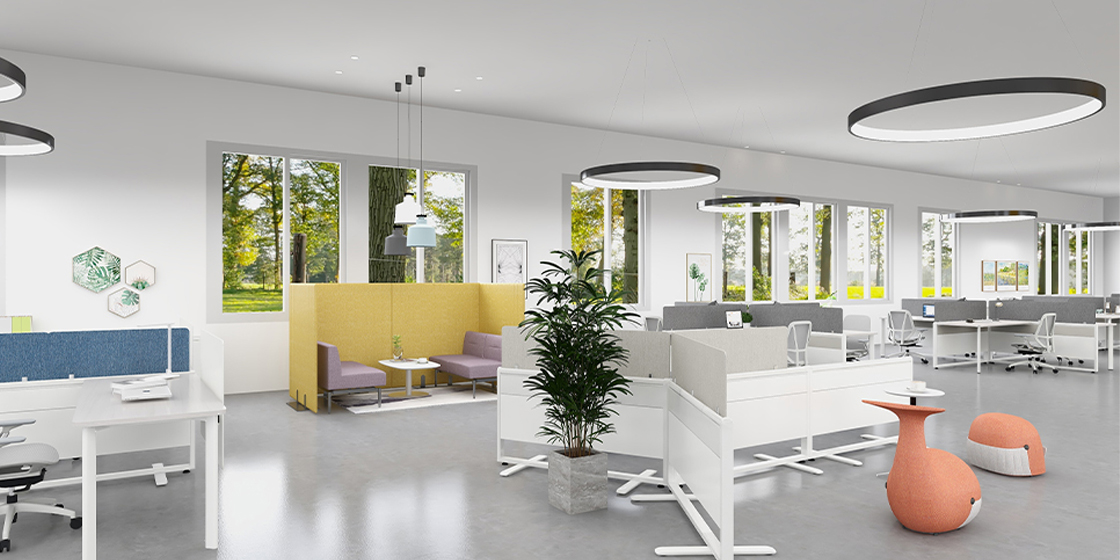
Q. Do you see any difference in the basis of the requirements of the company? Or is the size of the office space irrelevant to the post-pandemic changes?
SR: Speaking just in terms of size, there has been no such change in requirements. Clients are still interested in utilizing the spaces available to them in the maximum possible way. Nowadays, however, there is extra emphasis on designing the office space for further future expansions–so much that it can be done seamlessly and the space remains flexible. Workstation counts, in fact, have not come down overall.
The 'size of the office' perhaps matters not, in the overalls – but there is a need for it to be as hygienic as it's ever been. If you can deliver something that is fast and hygienic, nothing like it. I feel blessed to be working with a team that is proactive in this regard, and we have done some quality work since – but there's a lot more to be done.
Q. What technological changes do you see in workspace design?
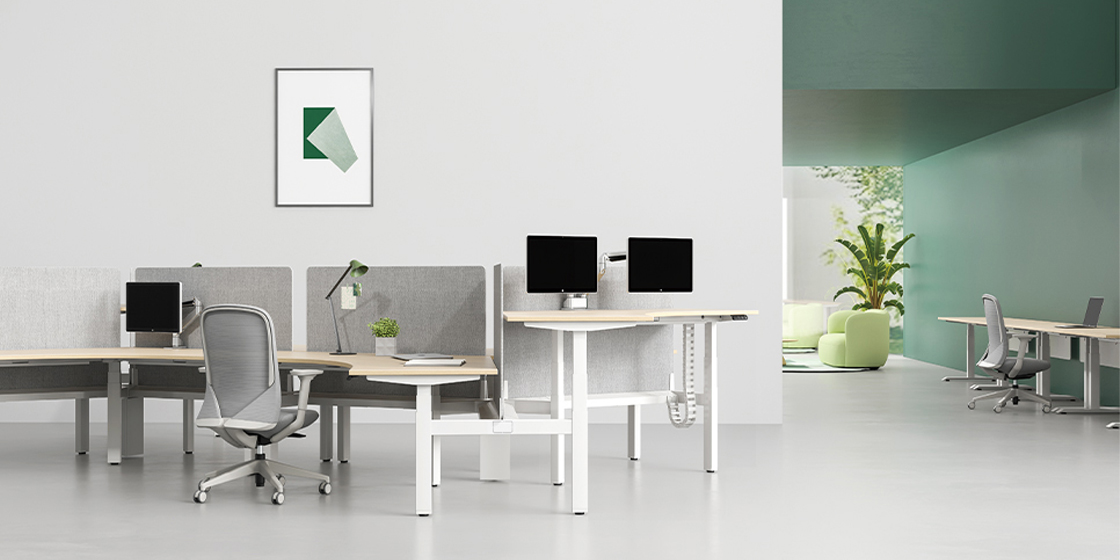
KM: There will be more automation than ever before—to avoid human-to-human transmission. More touch-less, motion-censored, and voice-activated services than ever before.
Also expect to see 'new age access systems', 'touch-free sensors', 'mechanical operating systems', 'auto cleaning technologies', etc. Expect technology to be at the forefront in this 'new era' of workplaces. In fact, both AR and VR will rise in prominence as time goes on. Technology will be at the center of the design, as always.
Q. How has the pandemic affected the product design industry overall? Do you see a lot of changes in office furniture designs?
SR: Yes! Products are now more hygienic than ever before—which, as environment-conscious interior designers, is amazing for us. Speaking strictly in terms of furniture, loads of introvert fittings and additions are being involved in the process. We just feel that now is as good of a time as any for designers to take safety precautions into consideration when it comes to designing. Not only does the furniture have to be changed to serve the purpose, but the material has to be easy to maintain too. We feel the latter often gets a bit overlooked.
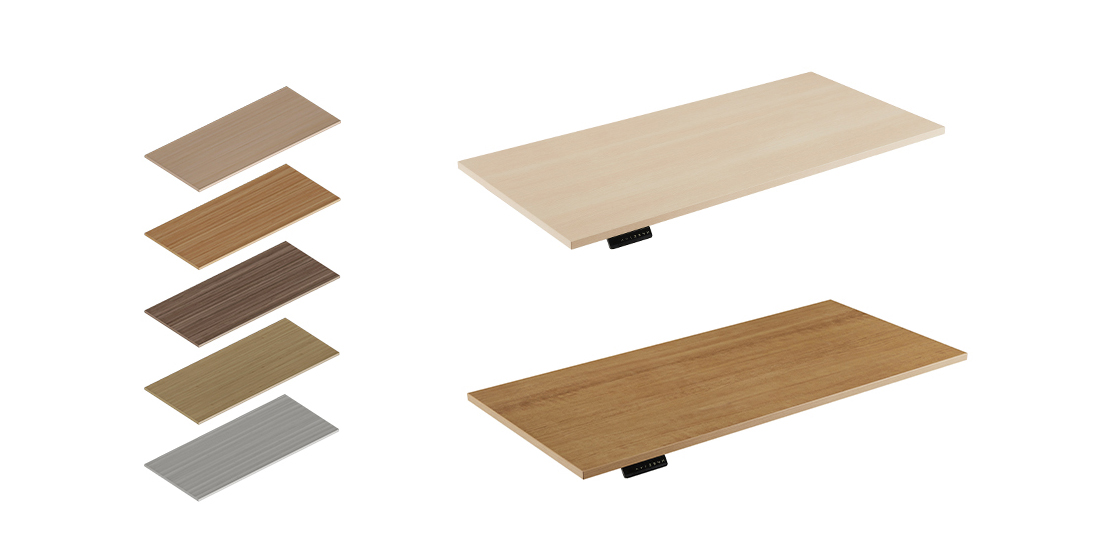
Q. Did you come across any innovative products or designs that focus on the post-pandemic work environment?
KM: We have come across certain specific products that we are eying. But as of now, I can't openly discuss them – due to the confidential nature of our work.
Q. What were the set of guidelines you were following until now for designing your products and how have they changed due to the pandemic?
SR: We focused on how to make people collaborate, how to build a community with them – even a family, within the office – when it comes to our design. That remains true during the pandemic – but with additional safety measures.
As mentioned before, there will be a standard distance between furniture, corridor spacing, ways to entry/exit, and a fixed specific set of people occupying a space. There will be an increased emphasis on convertible spaces and agile models when it comes to designing workplaces and that will remain true as we go along.
There's lots more, but this is what I feel comfortable sharing for now.
Q. As the world has started adapting to run on the web and seamlessly, is there any software you would swear by to give a smooth process of carrying out work? If yes then can you share those with us and your experience with it?
KM: In the case of software, it will remain as it always was. The key considerations (besides the software's effectiveness) are – is it user-friendly? is it easy to learn?
I mean technically there are a lot of choices, but if the answer to both those questions is 'yes' – then the software is highly competitive, for sure.
Q. On a lighter note, are there any changes that should have been adapted as a part of the work culture long back but failed to take its place since it wasn't a necessity before we were hit by a pandemic?
SR: Good question. Two things, actually. Let's discuss.
One: The increase in area per person—which has seen a significant reduction during the rise of commercial real estate. It is worth noting that it went from 150 sq ft per person to the currently accepted norm of 55 sq ft per person. Should it have happened? I think not. However, the trend seems to be reversing. So I guess things do move in cycles.
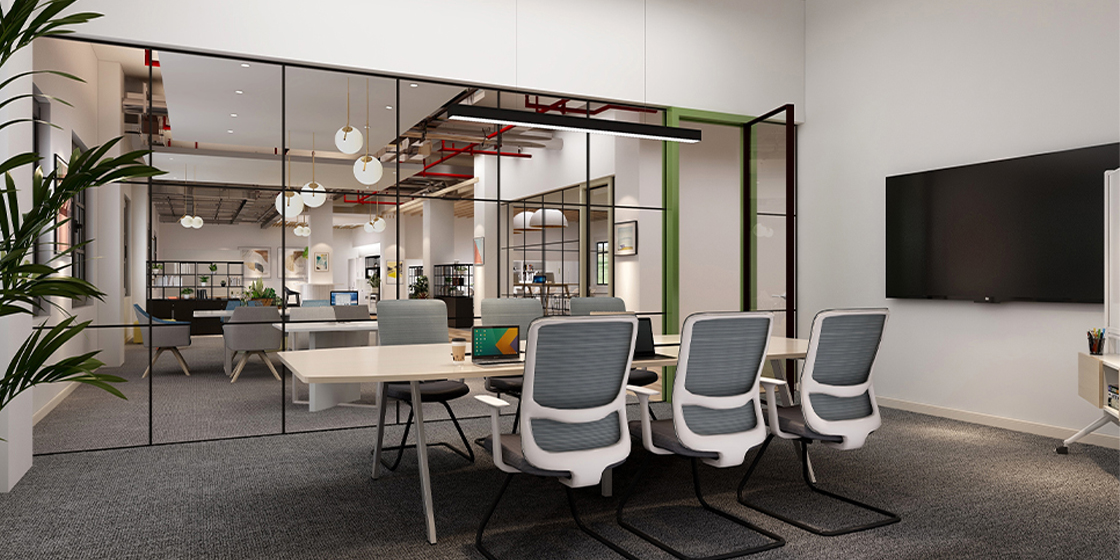
Two: The increased emphasis on wellness. I feel somewhere along the way, this very important concern got stagnated—and we could not develop safety standards for things like a pandemic. I feel that not only should wellness be made a very important area in office design, but wellness standards are also due for an upgrade.
Concluding the interview
KM: I feel that we should seriously discuss the psychological impact that this pandemic (and similar future ones) might have on the work environment. We need to see how we can further inculcate positive values in the work spirit and integrate it into the culture. We need to look at the team building more than ever, and consolidating the strength of culture as a whole – more so than ever.
This is the time where we cover each other's back. Not only should we overcome this as a whole as a team – but work towards building something better for the future as a team also.